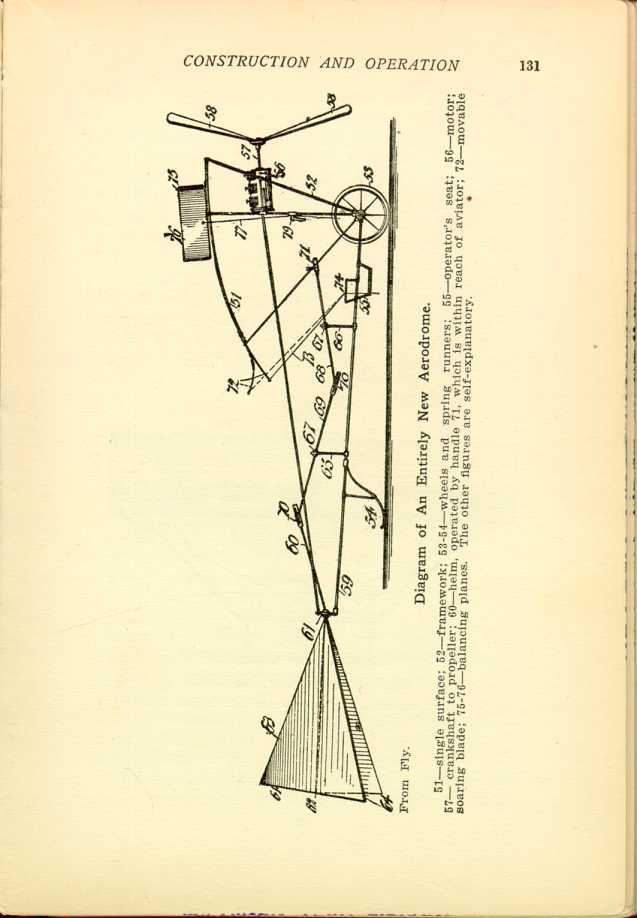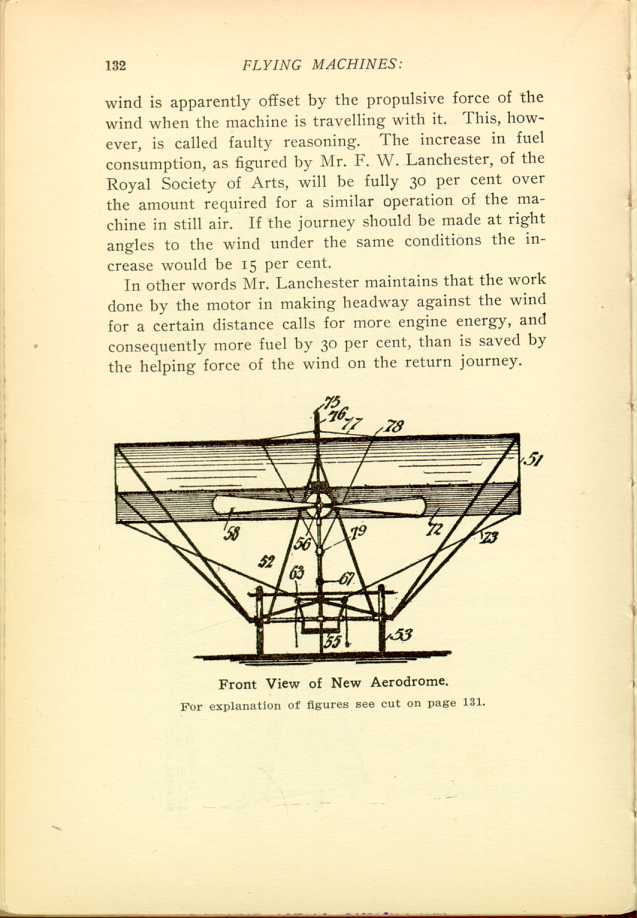Increase of Thirty Per Cent.
On the face of it there would seem to be no call for an increase as the resistance met when going against the
131

From Fly.
Diagram of An Entirely New Aerodrome.
51—single surface; 52—framework; 53-54—wheels and spring runners;
55—operator's seat; 56—motor; 57—crankshaft to propeller; 60—helm,
operated by handle 71, which is within of aviator; 72—movable soaring
blade; 75-76—balancing planes. The other figures are self-explanatory.
[Description: Black and white illustration: Diagram of aerodrome.]
132
In other words Mr. Lanchester maintains that the work done by the motor in making headway against the wind for a certain distance calls for more engine energy, and consequently more fuel by 30 per cent, than is saved by the helping force of the wind on the return journey.
